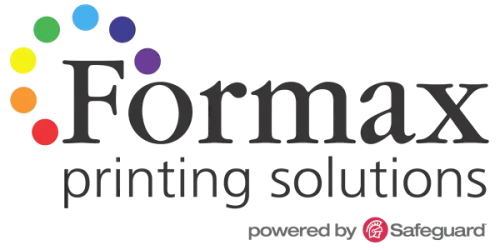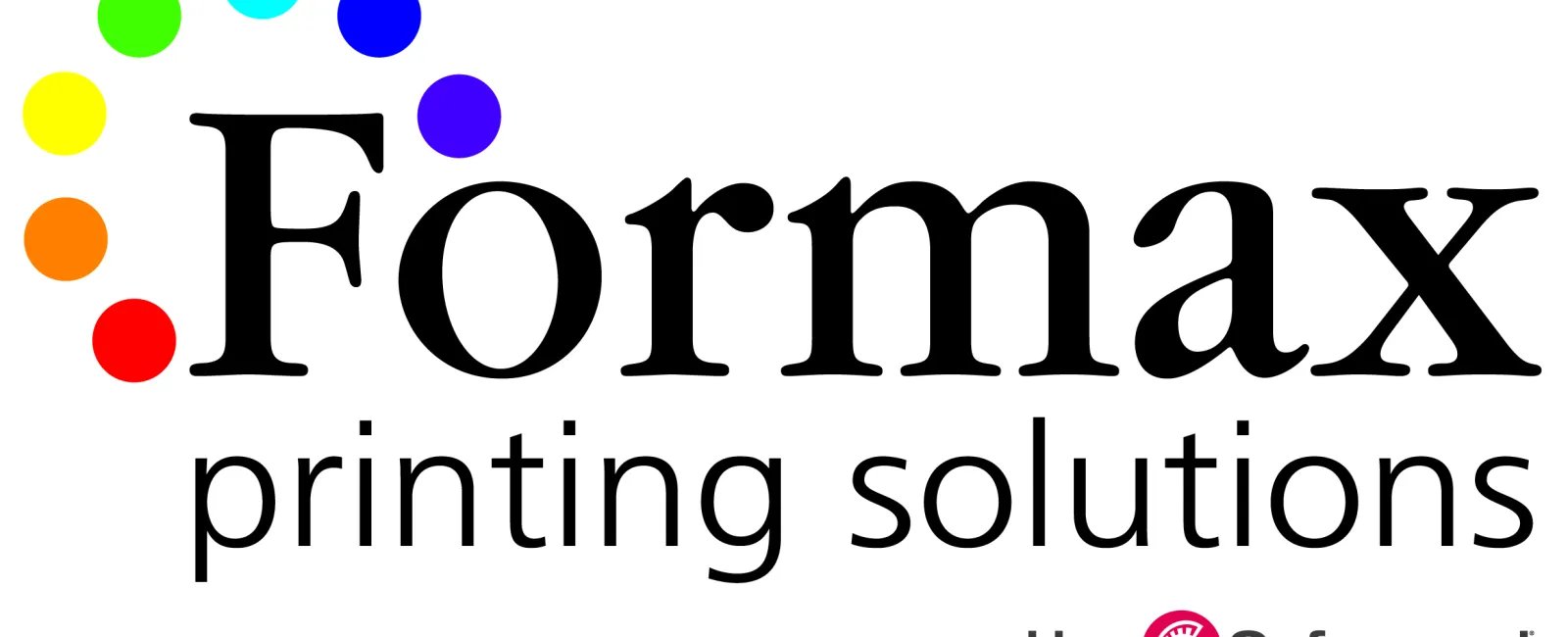Booklet Layout: How to Arrange the Pages of a Saddle-Stitched Booklet
Most booklets are created with the Saddle-Stitch binding method. This method uses printed sheets that are folded and nested one inside the other and then stapled through the fold line with wire staples. The staples pass through the folded crease from the outside and are clinched between the centermost pages. The result is a very simple yet professional looking document.
Despite its relative simplicity, saddle-stitch booklets often pose a challenge for someone new to graphic design. This is because the page set-up for saddle-stitched booklets requires a different approach than for other types of bound books.
Pages Must Be in Multiples of Four
Saddle-stitched booklets are constructed of folded sheets. As such, each folded sheet joined within the finished booklet will form four pages of the booklet. This means the page count of every saddle-stitched booklet must always be a multiple of four (4). Creating a 7-page, 10-page, or 25-page saddle-stitched booklet is impossible. All saddle-stitched booklets must contain 4 pages, 8 pages, 12 pages, 16 pages, 20 pages, 24 pages and so on. Even if a page in the booklet is blank, it still counts as a page.

What are Reader Spreads?
As its name suggests, Reader Spreads show the pages in the order they will appear to the reader of the saddle-stitched booklet. Hence, Reader Spreads position the booklet's pages in ascending numerical order. The main purpose of Reader Spreads is to help visualize how the page layout will look once the booklet is bound.
Illustration A shows how Reader Spreads will look for an 8-page saddle-stitched booklet. With the exception of the first page and the last page, notice that the Reader Spreads present two opposing pages side-by-side (such as how pages 2 and 3, pages 4 and 5, and pages 6 and 7 are shown in the illustration). However, submitting a file in this manner will likely cause a huge headache for your printer. This is because the pages of a saddle-stitched booklet aren't actually printed in the arrangement shown in the Reader Spreads illustration.
For example, the illustration shows pages 2 and 3 right next to each other. However, 99% of the time pages 2 and 3 are not printed side-by-side. You can verify this by examining pages 2 and 3 of virtually any printed saddle-stitched booklet. These two pages will be on separate sheets. (The only exception is a 4-page saddle-stitched booklet, which will have pages 2 and 3 printed side by side).
What are Printer Spreads?
Printer Spreads display the booklet's pages as they will actually print side-by-side on a sheet (see Illustration B).
Unlike Reader Spreads, the pages shown in Printer Spreads are not in numerical order. Instead, they are placed in an arrangement that will allow them to end up in correct numerical order once the pages are folded and bound into a saddle-stitched booklet.You can prove this to yourself by creating a simple mock-up of an 8-page booklet. First, place one sheet of paper directly on top of another sheet. Keeping the two sheets together, fold them in half. The folded crease will form the booklet's spine.
Position the mock-up so that the booklet's spine is on your left and the open edges of the pages are on your right. Starting with the very first page, use a pen or pencil to sequentially number each page of the booklet from 1 to 8.
Now, separate the two sheets and examine them. You will see that page 8 is paired with page 1, page 2 is paired with page 7, page 6 is paired with page 3, and page 4 is paired with page 5-just like in the Printer Spreads illustration.
At this point, you may be thinking that printers must prefer Printer Spreads. However, that is not always the case. Depending on the project, some printers may be okay working with your printer spreads. But the majority of printers will prefer something else entirely-
What Do Most Printers Prefer?
The layout spreads created by your design software may not be the same page arrangement that your printer will ultimately use to produce your booklets. This is especially true if your booklets will be a larger order that is produced on an offset printing press.But regardless of the order size or production method, most printers will prefer that you do not submit a file that contains two-page spreads. Instead, it is recommended that you set up your file as individual pages, presented one after the other, in the exact order they will appear in the finished booklet.
By the way, if your saddle-stitched book is 32 pages in length, create one file containing all 32 pages-don't submit 32 files with each file containing a single page. Also, be sure your file includes every page in the book. Even if some pages are completely blank, it is important that they appear in the file to ensure all of the pages get placed in the proper order.Submitting your file as individual pages instead of two-page spreads gives your printer much more flexibility, making it easier for them to arrange your book's pages in the layout that will provide the most optimal production run.
In addition to amending the page arrangement so that it matches the available production equipment, your printer will also be able to adjust the margins, allow for page creep, and perform other tweaks as needed to ensure your finished booklet will look its best.
To adjust your page layout, your printer will likely use special software, called imposition software.
What is Imposition?
Imposition refers to the process of arranging a book's pages prior to printing so that once the printed sheets are folded, bound, and trimmed, the pages will appear in the correct order.
The pages of books are commonly printed on large sheets of paper, with multiple pages printed on each side of these sheets. Known as Signatures, these sheets will be folded and trimmed after they are printed. Printing multiple pages on large sheets speeds up the printing process, simplifies the binding operation, and reduces the amount of paper waste.Illustration D shows an example of how a printer may impose the pages of an 8-page saddle-stitched booklet. Notice that the pages appear out of order, with some upside-down. However, this configuration will produce pages with the proper orientation, and in the correct sequence, once the booklet is printed, folded, bound, and trimmed.
In the example shown, four pages will print on the front of a master sheet and four pages will print on the back. After printing, the two-sided sheet will be folded in half horizontally (so that page 3 contacts page 2, and page 6 contacts page 7). Then the sheet is folded vertically again (page 4 meets page 5).
The booklet will be saddle-stitched (stapled) along the fold that forms its spine. After the pages (and cover) are joined with staples, all remaining folds are trimmed off to allow the pages to open freely.
Should the Booklet's Cover be sent as a Separate File?
Most saddle-stitched books have a cover that is made from a heavier weight of paper than the interior pages. If this is the case with your project, you have two choices. You can submit the cover layout as a separate file or you can include the cover in the same file as the pages. As long as the cover is clearly identified, either method will work.
That said, some saddle-stitched books are "self-cover" books, meaning the paper for the cover is the same type and thickness as the paper used for the interior pages. If this describes your booklet, including the cover in the same file as the pages will be better.
Also, whether your layout includes printing that will go on the inside of the booklet's cover or the inside cover will be left blank, be sure this is clearly communicated to those receiving your file(s). Finally, be sure to extend any bleed areas 1/8" past the finished page dimensions and to include crop marks. As far as the type of file to submit, a high-resolution PDF is generally preferred by most printers.
Have Additional Questions?
If you have an upcoming booklet project and need some guidance, give Formax Printing a call at 866-367-6221. Or, if you already know your specs and would like a quote, submit our quote request form. When it comes to creating a multi-page document, you will find that a saddle-stitched booklet is one of the most cost-effective options available. As always, we look forward to assisting you!
Take care! Rick




